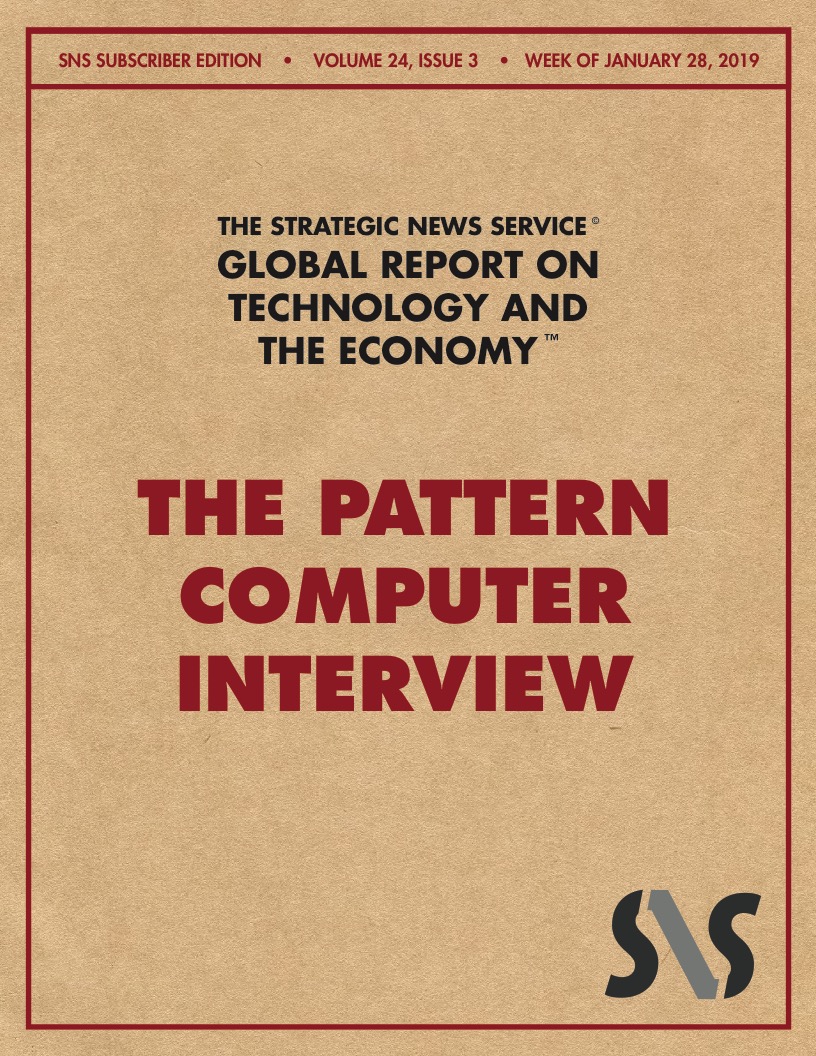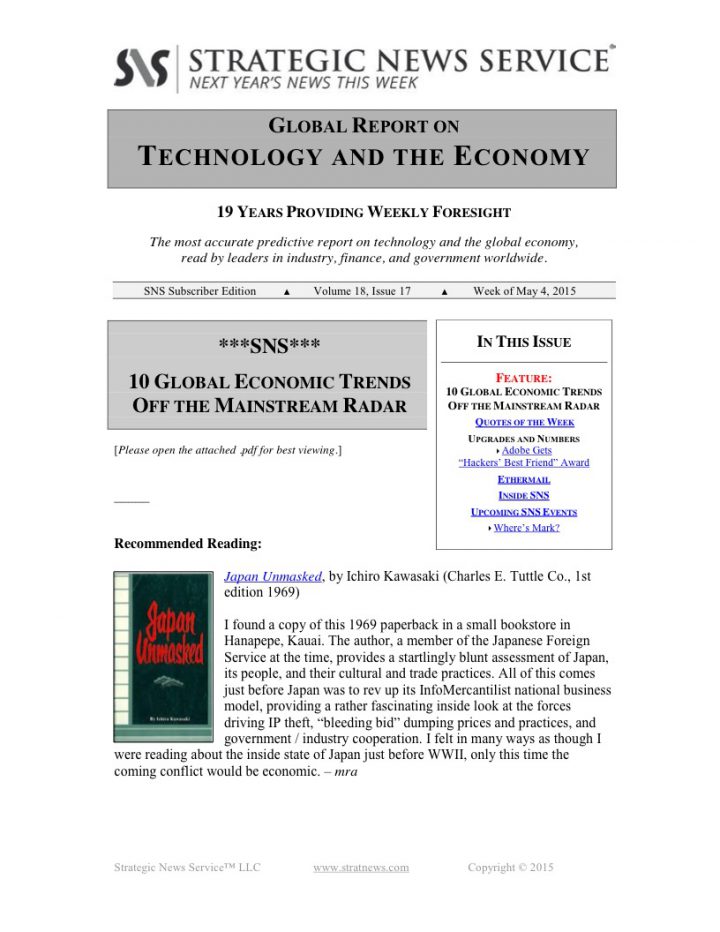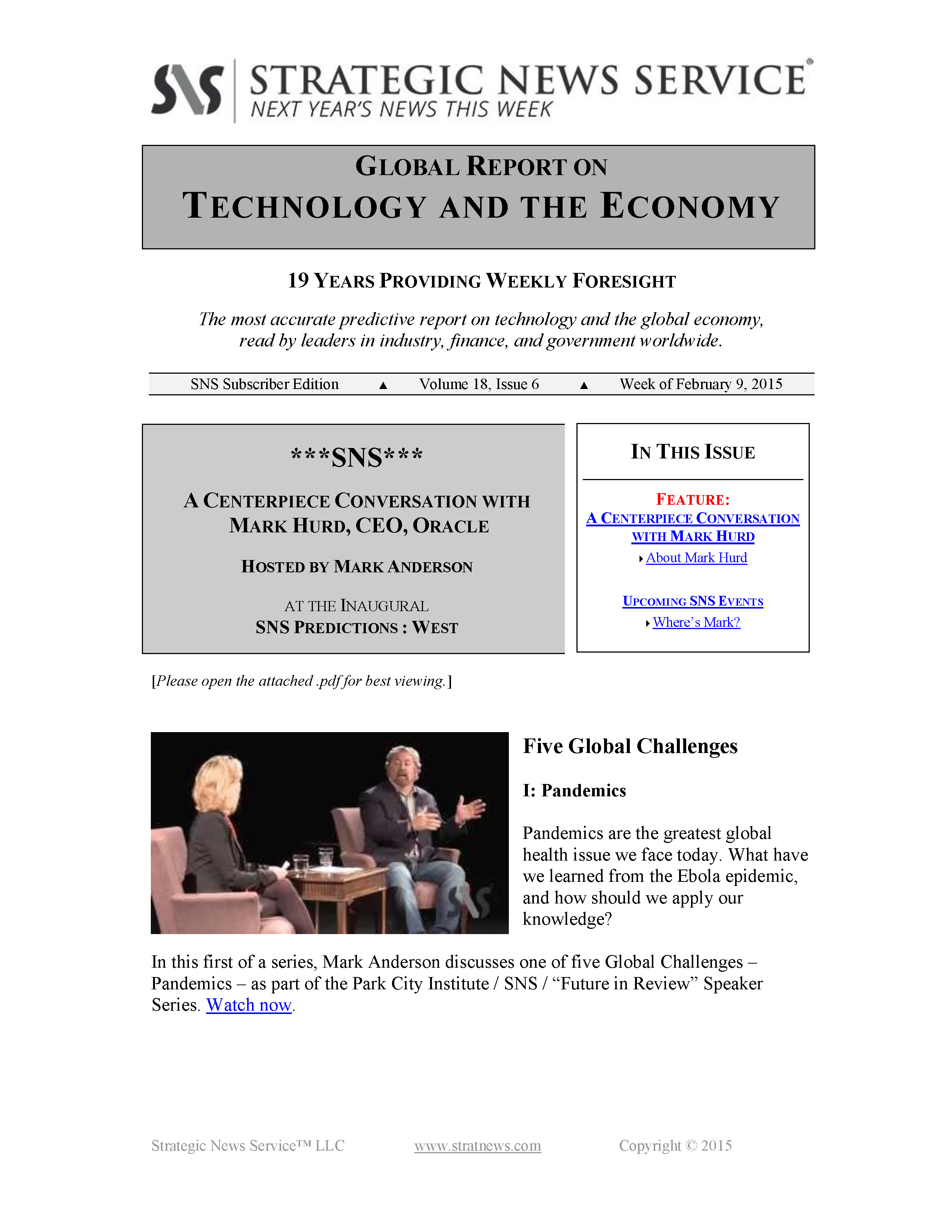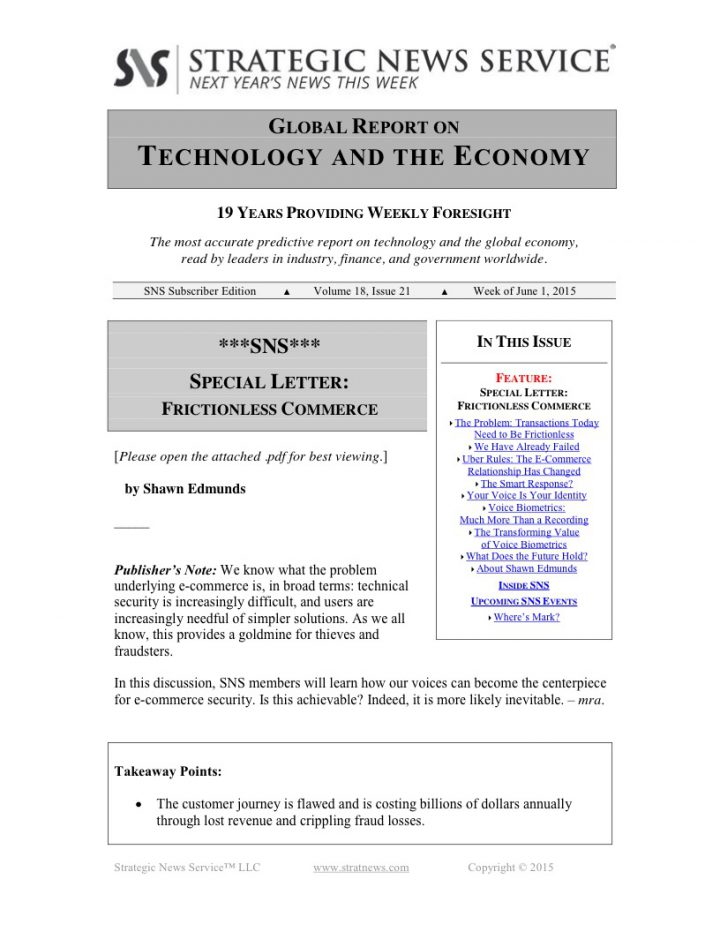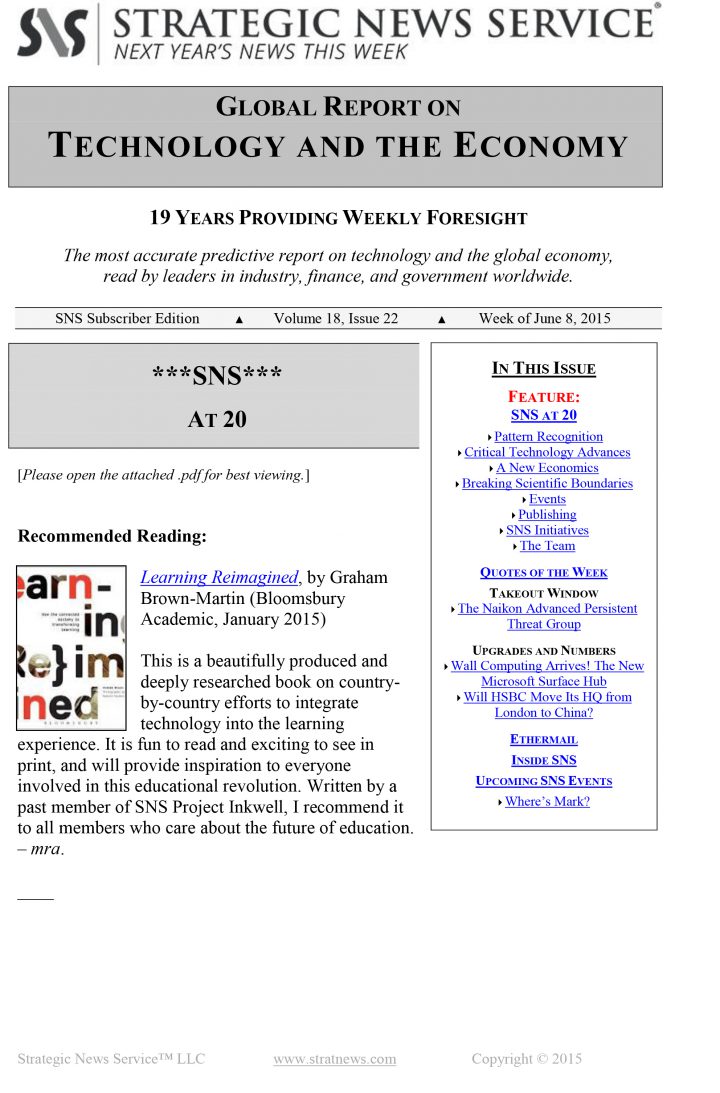In This Issue
Week of 1/28/2019
Vol. 24 Issue 3
The Pattern Computer Interview
Quotes of the Week
Upgrades
- The Apple Call
- The INVNT/IP Digest
Takeout Window
- Russians in Africa
Ethermail
—
The Pattern Computer Interview
Although Pattern Computer Inc. (PCI) officially moved out of stealth mode on May 23, 2018, it has remained quite secretive about its plans and achievements. This began to change with an onstage interview of PCI CEO Mark Anderson at the SNS Annual Predictions Event, hosted by the Technology Alliance Group (TAG) in Bellingham, Washington, on January 11.
The interviewer is Paul Grey, longtime SNS member and past chair and board member of TAG.
Paul Grey: Mark, you’re the CEO of this company called Pattern Computer. Why don’t we start by you explaining what those two words mean when you put them together?
Mark Anderson: Sure. If you think of the entire history of what computers have done for human beings until now, it’s really simple: we ask the computer to do something, it does it – payroll, whatever – it does it better, faster, bigger. It’s always something we ask for. It’s limited by our knowledge. It’s limited by our request. It’s limited by our hypothesis. We took the crazy idea of, “What if the world were more complicated than we thought, than we could conceive? What if we don’t use hypotheses at all? Could we build a computer system that wouldn’t rely on us to make the ‘ask’? It would just give us all the patterns in that information.” That’s what Pattern Computer does.
Paul Grey: Kind of an out-of-the-box concept there, Mark.
Mark Anderson: It’s brand-new.
Paul Grey: Could you give us the significance of such capabilities in layman’s terms? Why should we care about this?
Mark Anderson: Sure. Imagine that you have a big problem, like cancer – a big problem. People have been working on cancer for how long? Forever. There are a lot of smart people out there, and a lot of money being spent. They’re all great people. It’s a good thing to do: solve that problem. It represents a typical problem. Until now, that would mean that you go to school – go to grad school, go to med school – become a researcher, get an idea.
You think, Paul, that this gene, gene X, may be the new answer to why women get breast cancer, and you’re going to test that with an experiment, and you spend the next 10 years working on that. You might be wrong, or you might be half right, but there might be more to the story. The compute systems that you’d be using, including supercomputers, would be unable to go past a fairly low number of parameters in terms of gene expression … There are two areas here. One is, how complex is the question compared to what you’re asking? Cancer is complicated. And how high is the dimensionality of that problem?
As one example, we’re looking at a dataset right now that’s made of about 125,000 people around the world with a certain type of cancer, and there are 39 million parameters per person.
Paul Grey: Wow.
Mark Anderson: High dimensions.
Paul Grey: Yes.
Mark Anderson: As I can tell you appreciate, there are either few or no tools that can do that. What you end up doing is having a tool [that will handle] one, or a pair – twosies, onesies – but not able to look and come back with a sophisticated, complete answer about patterns that were in that data at higher levels. In one example that we explained at Splash [the official launch of PCI], we had a situation where we [described] working with Larry Smarr, on the human microbiome. You take all the tens of thousands of species of that, and then ask how many proteins they make. You’re at a crazy number, something like 10 to the 40th, which I’m told is more than grains of sand there are in the world, or in the universe. It’s a big number. It’s a bigger number than a supercomputer could attack. Oops! That’s going to be hard.
We were able to take that potential number of permutations and reduce that to 39 proteins, and then to nine. So the ability to take these very high-dimensional problems and not lose the information that’s in the dataset, and bring it down to a lower dimensionality where you can do intense mathematical work, is part of what this system does.
Paul Grey: Thanks for doing that in layman’s terms, too.
Mark Anderson: Did that work?
Paul Grey: That worked.
Mark Anderson: Alright.
Paul Grey: When we talked last year … but in another venue, about the book you’d just published, The Pattern Future, it seems like there’s a link here from your book and this company. Can you help us understand that linkage?
Mark Anderson: You bet. …
SKU: SNS-2019-02-01 - Need Help? Contact Us Leave Feedback
Categories: 2019 Issues, Back Issues
Tag: PDF Download

